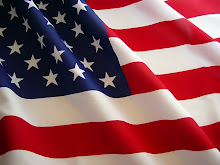1. a high or inordinate opinion of one's own dignity, importance, merit, or superiority, whether as cherished in the mind or as displayed in bearing, conduct, etc.
2. the state or feeling of being proud.
3. a becoming or dignified sense of what is due to oneself or one's position or character; self-respect; self-esteem.
4. pleasure or satisfaction taken in something done by or belonging to oneself or believed to reflect credit upon oneself: civic pride.
This is the detriment of many traders. Fortunately my wife stripped me of every bit of it which allows me to trade carefree. I don’t care if I guess wrong and the market trades against me. I get out, I try to figure out if the market has changed its “flow” and if it has, then get on board. If I cant tell, I sit on my hands until the market tells me which way it wants to go (one of the reasons I started this blog is to have something constructive to do during this time) Usually it will hit a S/R point and I will see Paper or locals entering or puking positions and the market will tell me what to do.
Many traders, once they make a decision, they will stick with that decision regardless if all the signs tell them they are wrong. This is a fault of pride. Many decisions are made during the trading day by many traders. I like to visualize it as Giant Stadium filled with traders everyday, all these different “characters” acting independently in a self-serving manner but as a natural social element, working somewhat together as a crowd (or herd).
Many of these decisions are made at specific times during the day. You can set your watch by some of them. As 1 example there is a program trader who has his clock set at 9:45 ET exactly. If the market is under certain conditions at that time he comes in as a buyer or a seller. There is a buzzer that goes off every 15 minutes on the floor. This is set to tell the traders that they must have their trading cards submitted by this time. I would hear the buzzer and see the system traders program hit the markets. You can see it pretty well on a tick chart but you have to watch closely.
Other than the open and cash close, important times are the first 30 minute and 60 minute time frames. Outside traders sitting in Geneva, Greenwich CT or Giant Stadium make decisions in this time frame.
There is a book that was written by a slime ball, you know the kind who makes your hand greasy when you shake his and you find yourself keeping one hand on your wallet when you are around him. He has a method of opening range trades using a 20 minute period for the S&P. It doesn’t work (so he opened a clearing firm to steal from other traders- now that’s a slime ball!). But even when something doesn’t work in your opinion it can lead you to developing a method of your own that does work. Those methods will always work better because YOU developed them and the work you put into them creates confidence.
For me, I found the 1 minute opening range works well because traders are making a lot of decisions at this time. They are using this point in time and market to measure their pride. Either it’s the locals who took the other side of the opening bell trades or the paper that made those trades. It may be that this works because I am looking at 1 minute charts, there could be another period that works better but that’s up to you to explore. I can easily draw lines on my charts on all the other index futures markets (not cash, thats a different method for another day) marking their OR. I can easily gauge if the markets are working together or not. You can see it using moving averages too but they are taking data from premarket and are lagging indicators.
Nevertheless, the 1 minute open seems to be a line in the sand for the markets. Traders who made a decision there will defend this area in order to maintain their pride. Different products trade differently around the Opening Range. The ES (S&P mini) is a bit sloppy. Too many traders and too much volume in this instrument can push it back and forth over the OR so you need to allow some “wiggle” room. Other thinner markets often respect it to the tick. Using the OR in context with what is occurring in the pit along with what the market is doing auctioning between Value can give you a higher probability that your trade will work.
This game is all about probabilities………… find your edge to give you a greater probability then place your bet…..
Tim Mack
Subscribe to:
Post Comments (Atom)

1 comment:
Thanks, Tim!
Very excited to find your site and read it!
Sounds to me that "locals" give the "hint/direction" to the world and everybody outside follow...then "locals" sell to the movement...
thanks
Tony
Post a Comment